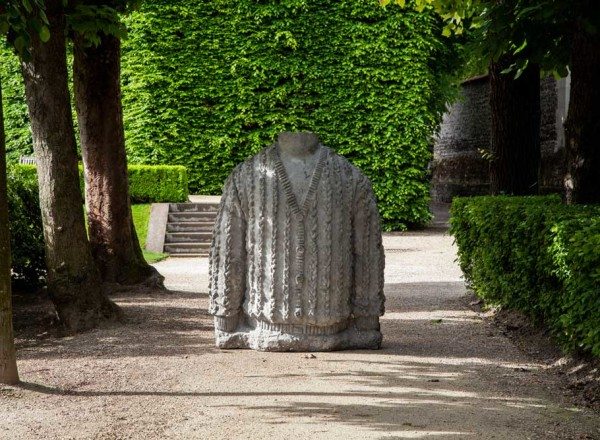


Daniel Dewar
B. 1976 in the Forest of Dean, United Kingdom
Grégory Gicquel
B. 1975 in St Brieuc
Both artists live and work in Paris.
They are represented by the Galerie Loevenbruck (Paris).
Since the early 2000s, Daniel Dewar and Grégory Gicquel have indulged in the joys of sculpture, an artistic field that has been heavily and historically referenced but a field in which they take great pleasure in renewing the parameters and altering boundaries. Their hands-on approach can be characterized by an inventive and unbridled formalism based on experimentation using a range of materials with a variety of qualities. Whether dealing with familiar or exotic figurative subjects, the appearance of their falsely heroic and oftentimes trivial oeuvres can be said to flirt with academicism and rely upon traditional gestures, techniques and know-how such as direct carving and modelling, re-worked in an unprecedented and unique fashion. The pair can be said to reinvent the conditions of existence of sculpture: examples of this include the extremely large format tapestry (Mammoth and Poodle, 2010), annealing pieces of found ceramics at very high temperatures (Mixed Ceramics, 2011), or manufacturing a life-size sports car in marble (Mason Massacre, 2008). Their work blurs the hierarchies between art, craft and industry. A penchant for excess may be seen in many of their creations which can be characterized by their disturbing monumentality, particularly in terms of their sculptural works designed for exterior locations. The artists relocate their studio to the great outdoors in order to create what may be referred to as “Figurative Land Art”.
Buste, 2014
Concrete
165 x 123 x 93 cm
Acquisition in 2015
Buste is a work that joyfully revisits the history of art and re-explores some of the major questions concerning the medium of sculpture, on a monumental scale. Here, the artist duo create a bridge between tradition and the present: tradition, in terms of how the work is realized, using the techniques of modelling, moulding and casting for the first time in their work. The traditional aspect also relates to the fragmentary treatment of the figure—the body reduced to a bust—and to its unfinished aspect, particularly the back of the sculpture, in addition to the importance given to the ornamental details or motifs. The current or contemporary aspect of the work relates both to the choice of medium: concrete, a rather banal material, typically reserved for architecture, and the subject matter: an ordinary cable-knit cardigan, with a rather comfortable appearance. The work was produced as part of an invitation extended to the artists in 2014 by the Musée Rodin in Paris, to present a body of new works within the gardens of the Hôtel Biron. In response, Dewar & Gicquel created ten monumental sculptures in concrete: figures, either fragments or parts of the body, both naked and clothed, including Buste, but also some more incongruous pieces, such as bathroom fixtures—a specific reference to our epoch. For Buste, the artists examine the human figure, isolating a bust; clothe it in a contemporary-style garment, and erect it to measure the height of a human body. With this well-dressed piece, the artists may be said to play with the heroism of ‘large-scale’ sculpture. As is often the case, the penchant for the artisanal is affirmed in the experimentation of new processes and materials, both on a massive scale, if we are to measure the large dimensions of the work, but also in terms of the details, such as the cable-knit motif of the cardigan, carefully shaped by the hands of both artists.